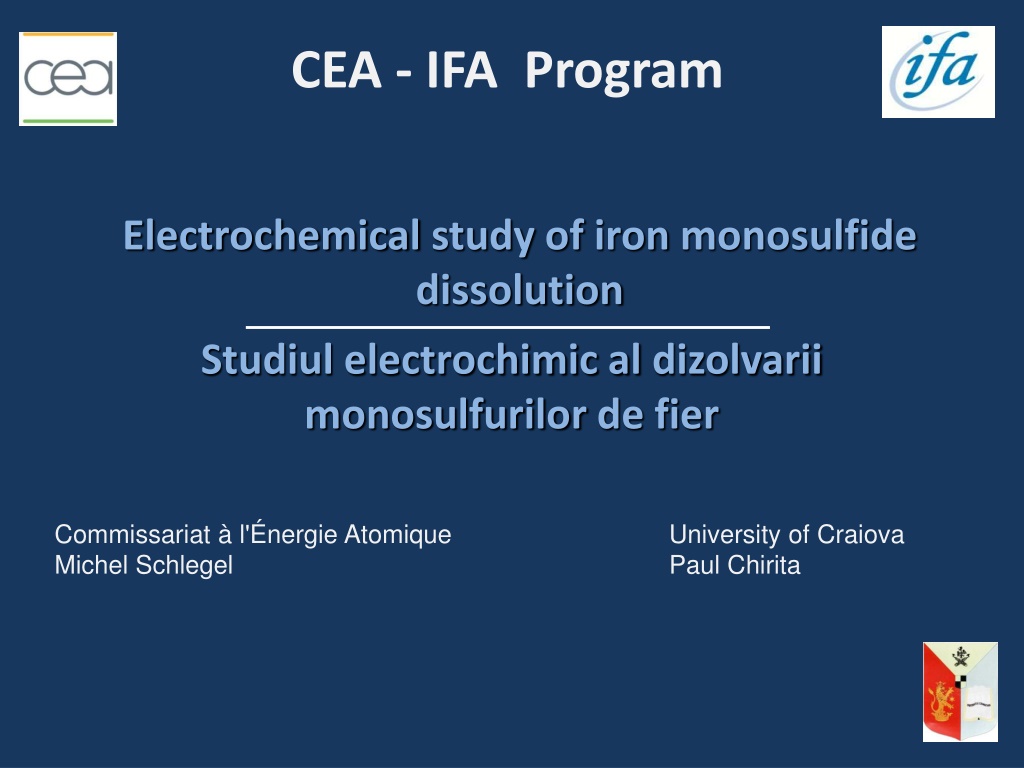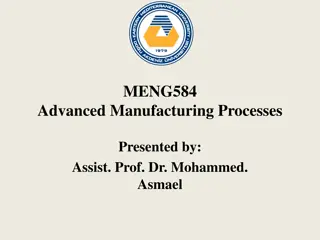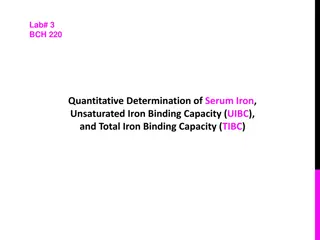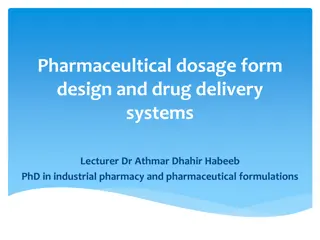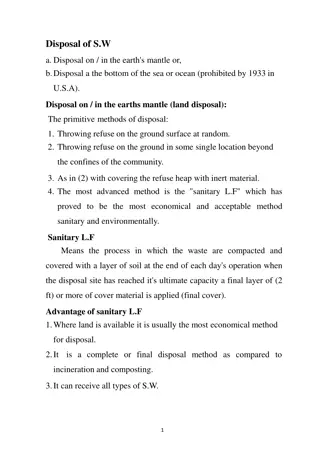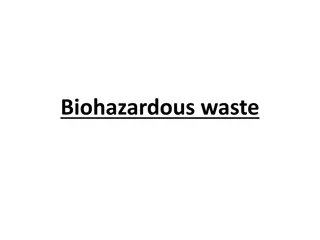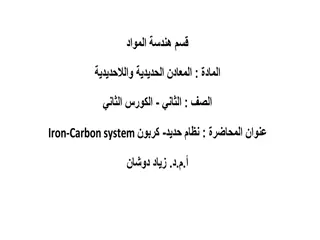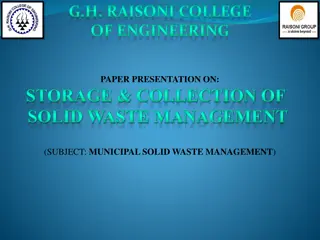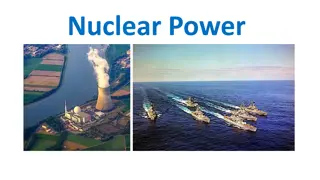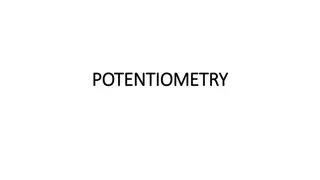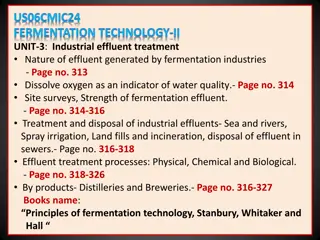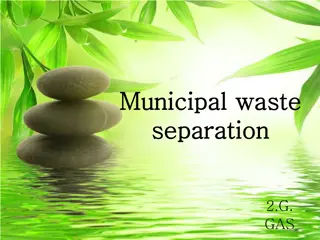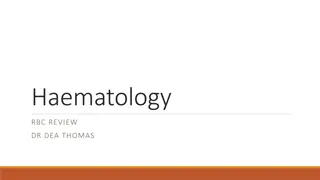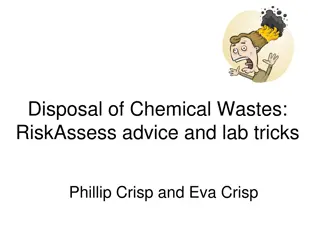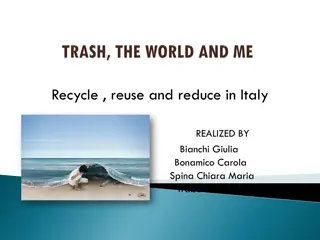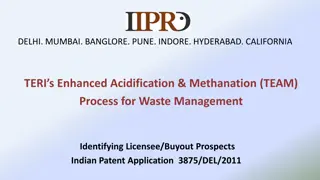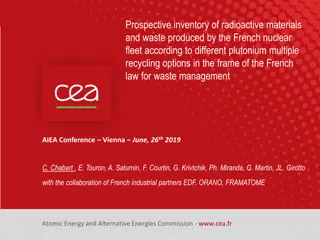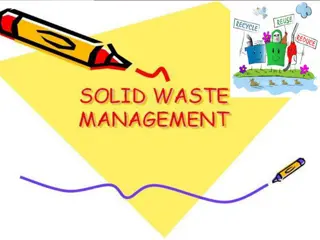Study on Electrochemical Dissolution of Iron Monosulfide in Nuclear Waste Disposal
Exploration of the electrochemical dissolution of iron monosulfide in the context of nuclear waste disposal, focusing on its impact on redox potential, corrosion products, and transport of radionuclides. The project aims to clarify reaction kinetics, mechanisms of sulfur release, and factors controlling dissolution through various analytical techniques and theoretical models.
- Electrochemical Study
- Iron Monosulfide Dissolution
- Nuclear Waste Disposal
- Redox Potential
- Radionuclide Transport
Download Presentation

Please find below an Image/Link to download the presentation.
The content on the website is provided AS IS for your information and personal use only. It may not be sold, licensed, or shared on other websites without obtaining consent from the author. Download presentation by click this link. If you encounter any issues during the download, it is possible that the publisher has removed the file from their server.
E N D
Presentation Transcript
CEA - IFA Program Electrochemical study of iron monosulfide dissolution Studiul electrochimic al dizolvarii monosulfurilor de fier Commissariat l' nergie Atomique Michel Schlegel University of Craiova Paul Chirita
Nuclear waste disposal in clay: the French concept Long-term storage of nuclear waste as a glass Glass containers in low-alloy steel overpacks inserted in the clay rock Heating, clay resaturation, anoxic conditions Steel (iron) corrosion Clay transformation Glass alteration transport of radioelement through corrosion products & in the near-field barrier Insert barrier Mechanism of iron corrosion? Nature and reactivity of corrosion products? Impact on the fate of radionuclides? 100 m Altered glass Corroded iron Glass Clay De Combarieu, Schlegel et al., Appl. Cheochem., 26, 65-79 (2011)
iron monosulfide in corrosion layers Insight from iron-clay corrosion experiments SEM-EDX analysis X-ray absorption spectroscopy S(-II) S(VI) 6 5 Normalized amplitude #06 4 S #05 3 #04 2 6+ +2 3+ #03 1 +1 4+ #02 +5 0 #01 -1 Micro X-ray Fluorescence spectroscopy 2460 2470 2480 2490 2500 Energy (eV) S(-II) in iron monosulfide Potential impact of FeS solid on the retention properties of radionuclides by the near- field clay? P. Chirita et al, J. Colloid Interf. Sci 321 84-95 (2008).
Impact of FeS dissolution on the redox potential Before FeS addition Before FeS addition AfterFeS addition AfterFeS addition Eh trend at 25oC and [Fe3+] ranging from 0.0001 to 0.0005 mol L-1, pH 2 and 3.2 Eh trend at 25 C in [HCl] of 10-2.75and 10-3.00, saturated with air. Dissolution of iron monosulfide (IMS) buffers the local redox potential and releases Fe(II)and sulfur species in intermediate oxidation states, which can maintain reducing conditions in the clay Chirita P., Descostes M., Schlegel M.L. J. Colloid Interface Sci 321 84 95 (2008). Chirita P., Schlegel M.L. Goldschmidt 2011, Prague, Czech Republic.
Project objectives Clarification of the reaction kinetics and mechanisms of sulfur-bearing species release during IMS dissolution, and the impact of redox active species transport in media around radionuclide repositories. Activities (1) Electrochemical investigation of IMS dissolution reactions (2) Characterization of solid reaction products formed on surface of IMS electrodes using specific surface science techniques (3) Identification of the main factors controlling IMS dissolution (4) Development of theoretical models to estimate the redox buffer potential of IMS
Electrochemical study of FeS dissolution in presence of O2(aq): pH effect 7 6 R = 0.9745 -lg i0 5 4 3 2 3 4 5 6 pH Potentiodynamic polarization behavior of FeS dissolved in HCl solutions at 30oC and pH from 2.5 to 5.0 Dependence of lg i0versus pH i0decreases from 6.7x10-5to 1.76x10-6 A/cm2when pH increases from 2.5 to 5.0 Reaction order with respect to [H+] is 0.67
FeS dissolution in presence of O2(aq): Impedance behavior Impedance behavior of FeS in HCl solutions at 30oC and pH 2.5 and 3.0 (a) and pH from 2.5 to 5.0 (b). Rctincreases from 0.25 to 19.76 KOhm when pH increases from 2.5 to 5.0
FeS dissolution in presence of O2(aq): Temperature effect 9.8 9.6 R = 0.9558 9.4 -ln i0 9.2 9 8.8 8.6 0.00295 0.00305 0.00315 1/T (1/K) 0.00325 0.00335 Potentiodynamic polarization behavior of FeS dissolved in HCl solutions with pH 2.5 Determination of activation energy for FeS oxidation by O2(aq)in HCl solution with pH 2.5 and temperature ranging from 30 to 55oC i0increases from 6.70 x 10-5to 1.25 x 10-4 A/cm2when temperature increases from 30 to 55oC Activation energy 24.49 kJ/mol
Effect of treatments on FeS dissolution in presence of O2(aq) Variation dissolution of FeS (either untreated or pre- treated) in presence of air of pH with time during the Variations of [Fe(aq)] with reaction time for FeS either untreated or pre-treated Chirita P., Schlegel M.L. (2011) The effect of solid pre-treatments on FeS dissolution. Surf. Interf. Analysis (submitted).
Dissolution rates as a function of time and sample pre-treatment X-ray patterns of initial FeS sample (down); FeS treated (middle) and FeS sample treated with HCl (up) with water Schematic representation of rate control during dissolution process of untreated FeS
Conclusions FeS dissolution in presence of O2(aq)is influenced by pH and temperature: - the reaction order with respect to [H+] is 0.67 - the activation energy is 24.49 kJ/mol The activation energy indicates that FeS dissolution in presence of O2(aq)is controlled by diffusion and surface reaction In similar conditions (30oC and pH 3.5), the reactivity of FeS (i0= 1.19 x 10-5A/cm2) is greater than FeS2(i0= 3.97 x 10-7 A/cm2). This suggests that FeS may react more rapidly to O2 ingress
Cooperation perspectives On-going study of the electrochemical study of IMS dissolution: 1) Investigation of IMS dissolution in anoxic conditions 2) Investigation of IMS dissolution in presence of Fe3+(aq); 3) Clarification of the IMS dissolution mechanisms. Development of common research topics, with elaboration of joint proposals under international and European Programs and Initiatives. Exchange of scientists and specialists between CEA and UCV. Support from IFA-CEA Program (Project C1-04) and CEA- SINF Aval du cycle are gratefully acknowledged.
